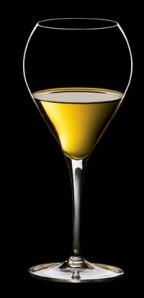A wine by any other name would still taste as sweet.
I hope the Shakespearian purists will forgive this misquote. Here’s why…
A couple of days ago I had a lovely ladies lunch at The Greenhouse Restaurant, London, with Aline Baly from Château Coutet in Bordeaux. We tried a couple of vintages of her wine: 2001 (truly luscious) and 2002 (fresher and more floral) along with the daily menu, (sweet onion tart followed by wood pigeon for me and sardines and coley fish for Aline).
Now those of you in the know will be aware that Château Coutet is a Sauternes, which means it is a sweet/dessert/pudding wine, undeterred by these suggestive monikers we drank it with our savoury courses. Our wild and maverick ways paid off because the wine complimented and flattered the food fantastically.
It was not the first time I’ve enjoyed pairings between Sauternes and savoury foods. Of course the two classic matches are a good salty, blue Roquefort cheese which makes a saline/sweet opposites attract pair and the unctuous combination with foie gras pâté which makes for an über-bling foodie experience. I’ve also had success marrying Sauternes with spicy foods and game.
‘I think a lot of people misunderstand Sauternes because it is called a dessert or sweet wines which suggests it can only be served with sweet things. As this lunch proves that simply isn’t the case’, said Aline. ‘We need to think of a new name which shows how versatile Sauternes can be.’
I took another long draft of the 2001 and thought about it for a moment, examining my glass, it was a perfect alchemist’s golden colour. Then it came to me.
‘Gold wines’, I said. ‘There are red wines, white wines and then there are gold wines. All the other wines are described by their appearance, so why shouldn’t Sauternes be as well?’
‘Perfect’, replied Aline with a laugh. ‘It’s a new category. Gold wines.’
We then discussed other wines which go into the gold wine sector, these include Hungarian Tokaji, German trockenbeerenauslese and beerenauslese and Loire Quarts de Chaume and Coteaux de Layon. The list goes on and they are very, very delicious.
Of course this doesn’t change the fact that these wines are sweet, most will have at least 45g of residual sugar per litre. But the best also have a lot of acidity which keeps them fresh and zingy and why calling them sweet wines is only half of the story, they could almost be described as sweet ‘n’ sour.
I hope the ‘gold’ wine tag catches on and that more people are prepared to try these wines with different foods and drink them outside the narrow dessert/pudding pairing. I am sure there are all sorts of food pairings that are great with gold wines. I would love to hear about them. In the meantime here’s my new recipe for Gold Chicken.
Gold Chicken
Four chicken thighs
Two generous glasses of gold wine (I used a Gaillac Doux Muscat from Domaine de Labarthe, 2004, keep the elegant likes of Château Coutet for the glass not the casserole dish!)
Marinade the chicken in the gold wine for at least four hours.
Brown the chicken in an oven proof dish, add the remaining wine marinade. Then bake in a moderate oven for twenty-thirty minutes.
I served it with pilau rice laced with walnuts, fresh pineapple and parsley and the rest of the bottle of Gaillac Doux Muscat. Delicious!

